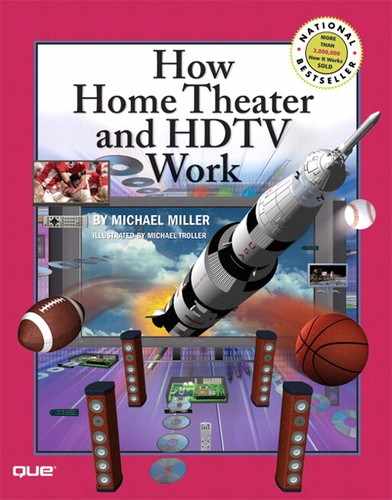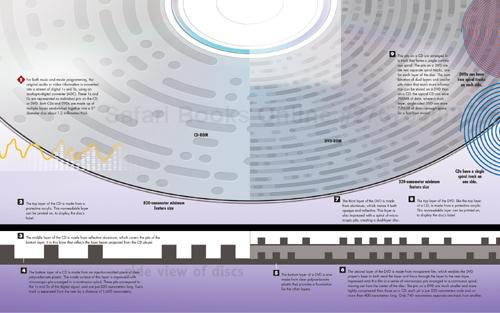
A little over 20 years ago, digital technology entered the living rooms of the world. This technology—using computer-like bits and bytes to carry programming information—came on a silvery 5”disc, and was read by a low-powered laser beam. Chances are, you probably have one of these digital devices somewhere in your home, along with several dozen (or several hundred) of the silvery discs. You call them compact discs, or CDs, and you use them to listen to digitally recorded music.
The CD was a great idea, and the digital technology behind the CD was later adapted to hold more bits per disc, in order to better accommodate video programming. The resulting DVD format has now become the standard for all prerecorded movies.
The picture quality of a DVD is the best you can feed into your home theater system, short of moving to HDTV. DVDs are capable of 500 lines of resolution, which is much better than VHS (240 lines) or broadcast television (330 lines). DVD’s picture quality is twice as sharp as a VCR, 50% sharper than what comes over analog cable, and 25% better than what you get off of satellite or digital cable. Plus you get digital surround sound and, in many cases, a widescreen aspect ratio—all for less than twenty bucks a disc!
While the first DVD players cost close to a thousand dollars, today DVD players can be had for well under $100. This drop in price opened the door for affordable DVD players that do more than just single-disc playback—such as the latest trend, the DVD recorder. A DVD recorder lets you not only watch prerecorded DVD movies, but also record your own DVDs. Some DVD recorders include a hard disk recorder, so you can record television programming to the hard disk and then burn those programs to DVD. You can also use a DVD recorder to create DVDs from the home movies you make with a MiniDV camcorder;it’s all digital recording, from start to finish.
Know, however, that as great as the existing DVD format is, the picture is strictly standard definition (480i). The current generation of DVDs can store only 8.5GB of data, which isn’t nearly enough to reproduce a full high-definition movie. That will soon be rectified, however, by the adoption of a new high-definition DVD format, which will of course obsolete your entire DVD collection!
Currently, two competing high-definition formats are getting set for battle. The Blu-ray Disc format offers 50GB of storage on a dual-layer disc, while the competing HD DVD format offers 30GB of storage—both large enough to store 1080p high-definition programming with multiple tracks of lossless digital audio. Both formats use 4.75” diameter discs, the same as today’s DVD format, and are likely to be backward compatible with current DVD players.
Blu-ray was developed by Sony and is supported by Columbia Tri-Star, MGM, and Disney; HD DVD was developed by Toshiba and NEC and is supported by Time Warner, Universal, and Paramount. There’s no predicting which new format will win the war, but expect high-definition DVDs of some sort in your living room by the end of the decade!




